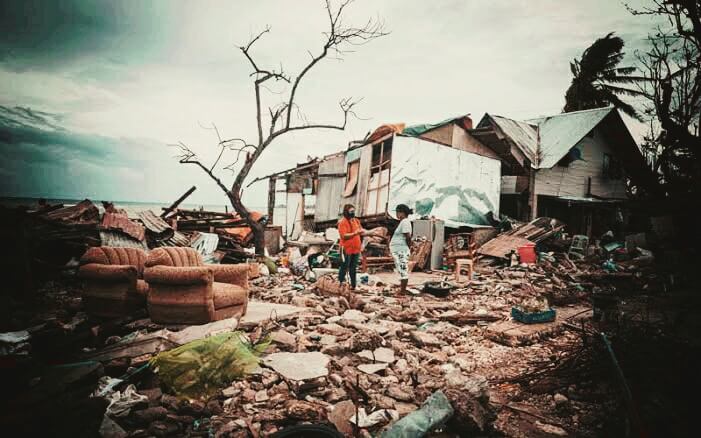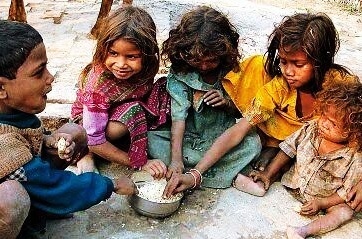Poverty Essay
Being poor renders a person defenceless and vulnerable. A flawed individual is unable to obtain the three necessities of life because of poverty, which are bread, clothing, and home, which are the three most essential items. They only receive one meal at a time, even though he works all day in the sweltering weather. They lack pucca roofs that would shield them from the intense sun, heavy rain, and storms. In the winter, they have nothing to protect their bodies with. Poor people cannot afford quality healthcare or education for their families. They lack the ability to think, comprehend, and perform any task effectively.

The Root Of Poverty
- Lack of Employment Opportunity
Poor health, illiteracy, frustration and sadness in young people and family strife are all effects of unemployment. Additionally, prejudice, skill loss, and self-esteem loss are consequences.
- Inadequate Education
Lack of education is the second leading factor in poverty. Without education, people are unable to break the cycle of poverty and improve their lives.
- Warfighting
Poverty is significantly impacted by conflict. Everything comes to a halt during the war. Both productivity and a nation's GDP decline.
- Social Mistreatment
The most vulnerable groups, according to the U.N.'s most recent study on global poverty by the Institute for Economics and Social Research, are women, religious minorities, and people of colour.
- Food and Water Shortage
They won't have the energy to work if there isn't enough food. Additionally, they are more vulnerable to falling ill, which worsens their financial predicament.
- Infrastructure Failure
People are connected through resources and services, and for this, they require infrastructure. It takes forever to commute from one place to another without good roads. Without access to public transportation, finding a suitable job or even going to the grocery may be nearly difficult. Without infrastructure, conditions don't improve for residents of remote places.
- Lack of Government Aid
This could be omitting (or eliminating) social welfare initiatives, diverting resources away from people who require them, neglecting to provide adequate infrastructure, or actively persecuting the populace.
Poverty Is A Sin
The biggest sin in India is poverty. One of the country's most significant issues is this. The nation is experiencing a daily rise in poverty. Agrarian India is a nation. We do not contest the considerable contributions made by science to the nation's agricultural sector.
People in an agricultural nation like India aren't meandering from conventional farming. The country's natural disasters frequently leave farmers unable to protect their livelihoods, crops, and agriculture. The government of the nation must give the nation's farmers access to economic resources.
What Does The Poverty Line Mean?
The poverty line is the money necessary to maintain the bare minimum necessities of life. The poverty line is the sum of money required to meet one's fundamental necessities. It is described as the monetary value of the commodities and services needed to ensure a person's absolute welfare.
Depending on how a country defines poverty, the poverty line can vary. The poverty line is higher in developed countries because there are better consumption standards and more access to a wide range of products and services. Less developed nations will have modest basic needs, which mostly consist of necessities for sustaining life. Everyone today is distressed as a result of the curse that is poverty. Injustice and hunger are encouraged by poverty.
Effects of Poverty
- Illiteracy: A more significant proportion of the population is illiterate. Education becomes quite challenging when people lack the most basic necessities of existence.
- Child Labor: Both young boys and girls work as children in India in great numbers.
- Diet and Nutrition: Poverty is the main factor contributing to inadequate diet and nutrition. Poor people have extremely restricted resources, and their diets reflect this.
- Poor Living Conditions and Housing Issues: They are not provided with adequate living arrangements. To obtain food, clothing, and housing, they must struggle against the suffering of poverty. Many low-income families reside in homes with just one room.
- Unemployment: Looking for work causes the poor to move from their villages to their towns and vice versa. They are primarily illiterate and unskilled, which leaves them with a minimal number of career possibilities. Because of unemployment, many poor people must lead useless lives.
- Hygiene and Sanitation: These people are unfamiliar with the fundamentals of appropriate hygiene and sanitation practices. They have no idea what lousy hygiene practices can do. A decent sanitation system and access to clean, safe water are two things that the government is working to offer its citizens.
- The feminisation of Poverty: Women suffer from poverty more than anyone else. More women than males suffer from poverty. More poor women than poor men live in the world as a whole. Low wages, gender inequality, and other factors are the causes. They lack access to a portion of healthy food, medications, and medical care.
- Social Tension: Income disparity and an uneven distribution of the nation's wealth between both the rich and the poor are prevalent aspects of poverty. Insurgencies and social upheaval are triggered by the accumulation of wealth in the hands of a select group of wealthy people. The general level of living among individuals increases when the wealth is distributed fairly or evenly.

A Description Of World Poverty
- There are 736 million people that are extremely poor. Three hundred sixty-eight million people, or over half of the world's poor, reside in just five nations: Bangladesh, Ethiopia, the Democratic Republic of the Congo, India, and Nigeria.
- One in ten people in emerging countries survives on less than $1.90 daily.
- More than 35% of the world's population, or 2.5 billion people, lack access to better sanitation.
- There are one billion people without access to energy and hundreds of millions more who have expensive or inconsistent power.
- Over the following ten years, poverty reduction rates are anticipated to slow.
Ways And Methods To Reduce Poverty
- In order to incorporate and assist the impoverished, develop and implement programs and policies for quick and sustained growth in the economy in the health, education, nutrition, and sanitation sectors. According to studies, a 10% rise in a nation's average income can reduce poverty by as much as 20-30%.
- Boost water and other natural resource management. The majority of rural poor people rely on agriculture or other natural resources as their primary source of income. Therefore, it is essential that they have more equitable access to such resources in order for them to manage their resources more effectively.
- Spending money on and carrying out agricultural activities. Since 1978, China has assisted 800 million people in escaping poverty. The Agricultural Bank of China would lend more than $400 billion to assist in the development of rural areas and fund education, infrastructure, and food production as part of its plan to alleviate poverty by 2020. However, they didn't achieve their goal.
- Encourage nations to trade as a means of escaping poverty. The secret to success and growth is trade. Brazil, Botswana, and some of the world's poorest nations, such as Indonesia, have traded their way out of poverty.
- Create and enhance employment and income opportunities, and foster entrepreneurial ability.
- Ensuring that everyone has access to essential social services, including education, health care, enough food, sanitisation, shelter, and clean water.
- Establishing social protection systems progressively to help people who can't support them properly.
- Involve those who are experiencing poverty in the creation and execution of strategies and initiatives aimed at reducing and eradicating it. Through their participation, programmes are made sure to reflect their values.
- Assist in removing obstacles to equal access to resources and services.
- Access to modern tools, such as affordable energy and the internet, should be made available. Only 40% of the country's poorest residents have access to grid energy in Bangladesh. The Second Rural Electrification and Renewable Energy Development Project aims to increase access to power for rural communities by utilising sources of renewable energy.
Conclusion
By taking steps to address flood issues, establishing cooperative farms for the adoption of modern agricultural techniques, freeing the poor from the grasp of various types of exploiters, providing them with work opportunities, and slowing down population increase, we may attempt to eradicate poverty. However, we won't be entirely successful that way. We must work to drastically alter the processes to ensure that no one may take advantage of others to truly end poverty. But before we accomplish that, we must keep in mind that a simple phrase will not end poverty. To achieve that, everyone must labour truly.
|


 For Videos Join Our Youtube Channel: Join Now
For Videos Join Our Youtube Channel: Join Now









